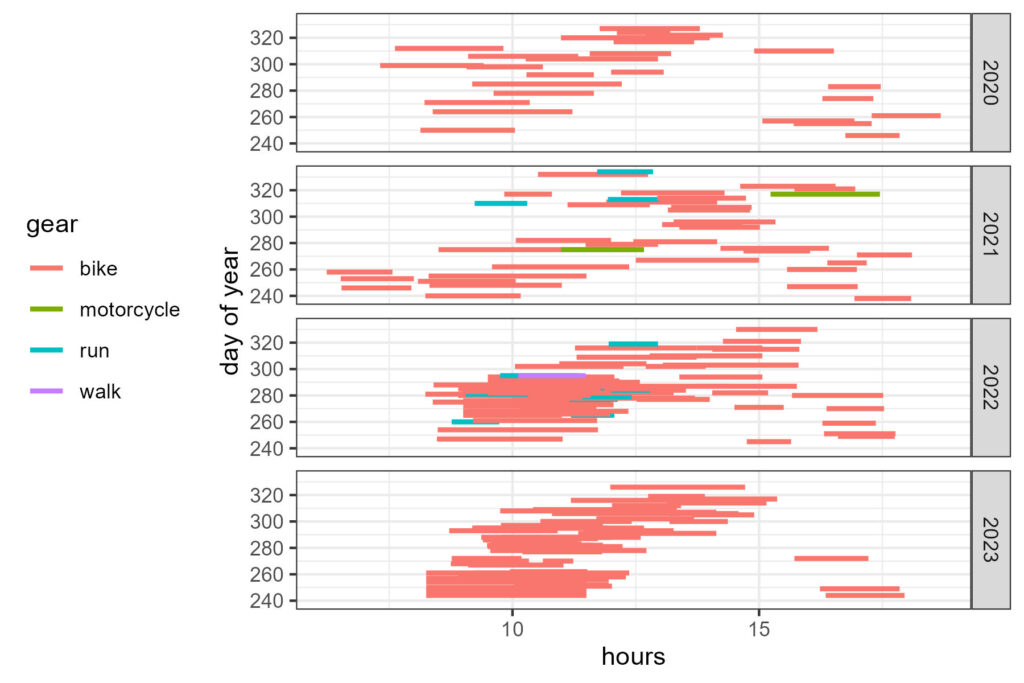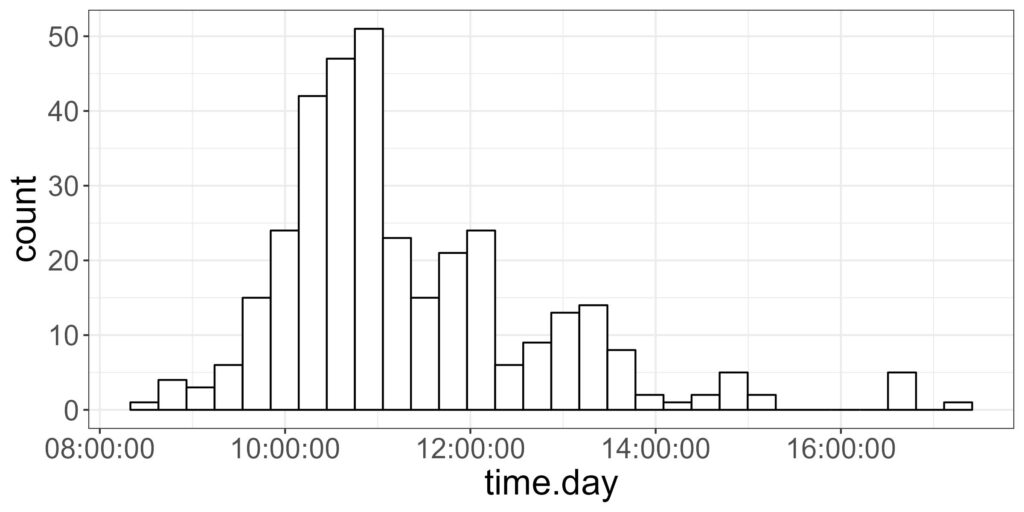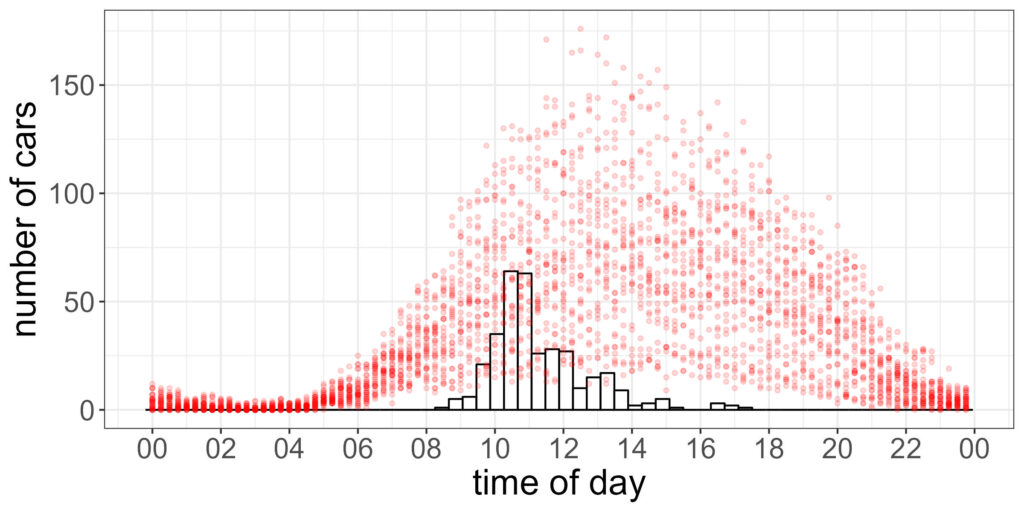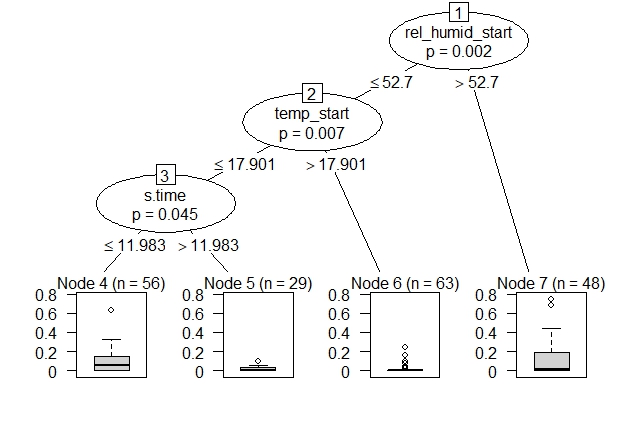I presented preliminary results of the “Cycle for Science” project at the Joint Annual Meeting of the Arizona and New Mexico meeting of the American Fisheries Society and The Wildlife Society in Farmington New Mexico in 2-4 February 2023. I have updated the results to include 2023 data.

This is a figure of all the bicycle trips by year, with time on the x axis (start and end of ride) and day of year on the Y axis. In total there were 204 trips/transects and we covered 5876 mi (9,477 km) and have location data on 369 tarantulas. There is an unavoidable pattern in the time of day bicycle rides occur. Later in the year as the temperature is colder in the morning, we tend to ride later in the day, we do not like cycling when it is cold out. But, tarantulas do not like being out when it is cold either. The mean temperature of tarantula observations was 16 °C (60.8 °F) with a range of 3-23 °C (37-73.4 °F).

This is a histogram of time of day each tarantula was observed. There is a peak at about 10:30- 11:00 am, with the bulk of observations occurring between 9:45 am to about 12:00.

Here I present the time of tarantula occurrences with road traffic on Lake Mary Road. As you can see there is a bit of overlap of when tarantulas are out wandering and high levels of traffic (number of cars) .

This is a classification regression tree based on the number of tarantulas seen by trip (bicycle ride). So say I run a wildlife viewing company and my clients wanted to see tarantulas 🙂 Doesn’t everyone? Anyway, our best chance of seeing tarantulas would be to go out when the humidity was greater than 52.7% (node 1 at the top), we would have about a 10% chance of seeing a tarantula (box plot in node 9). The next best bet if the humidity was less than or equal to 52.7% would be to go out when the temperature at the start of the ride was less than equal to 17.9 C (64.2 F) (node 2) and we went out before noon (node 2: s.time = start time). I found it interesting that day of year was not a significant factor as male tarantulas are only actively wandering around from mid September to mid to late November.
Phase Two: tracking tarantulas!
Update: I did not receive the research grant. I also did not have time to manually track tarantulas this year (2023). I still would like to do that and hopefully will be able to in 2024. Please let me know if this is something you might be interested in.
I will continue Phase 1 of this study – the Cycle for Science portion outlined above as long as I am able and volunteers are willing. However this coming fall (2023) I want to expand the program. I am referring to it as Phase 2. I recently (17 March 2023) applied for a small grant to purchase some radio telemetry equipment. I hope to put radio tags on 7-10 male tarantulas and track them over a period of time to determine 1) their home range, the size of the area that they wander, if they have one, 2) is there a direction to their movements? and 3) how far do they move within a day?
I will be looking for volunteers to help out with this part of the study, even if I do not get the grant. If I don’t get the grant, I will track individual tarantulas using a handheld GPS. Let me know if wandering in the fields and forests looking for radio tagged tarantulas or following a tarantulas for 4 hours sounds like something you would be interested in doing this fall.
Back to “Cycle for Science” page
back to Home page